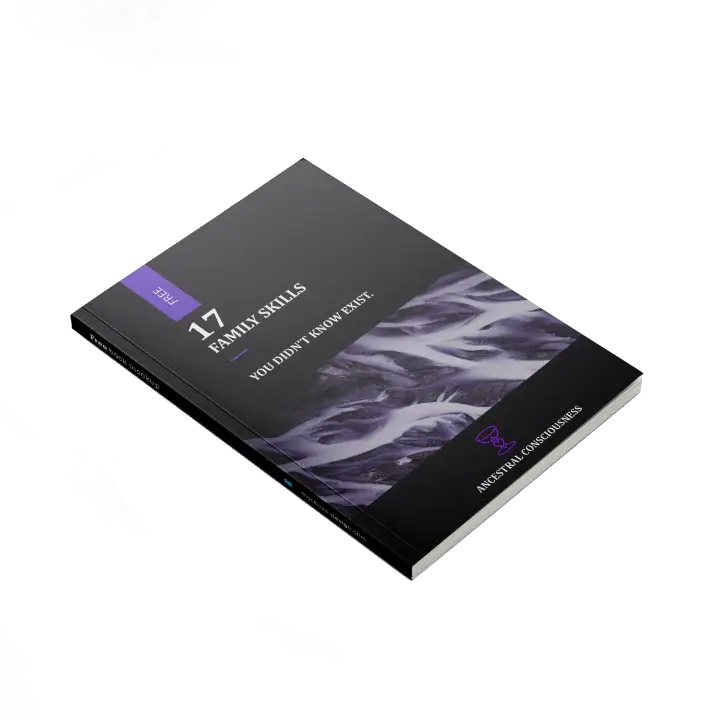ChatGPT: Sound & Music Therapy
HealMind offers sound and music therapy to help you relax, reduce stress, and improve your overall wellbeing.

Learn META Skills
to not get left behind during AI takeover
By combining therapeutic frequencies and vibrations with the power of music, it is possible to achieve profound levels of mental and emotional healing. In particular, sound and music can help reduce work stress and serious anxiety, improve cogent communication, balance the mind, body and spirit(yes all three), and provide a sense of immensecalm and connection to one's true nature.
When engaging in sound therapy and music therapy, it is important to find the right frequencies and sounds that resonate with one's individual needs and desires. It is also important to determine the right kind of music and sound, and to ensure the listener is in a relaxed and receptive state. Finally, it is important to practice self-care in order to maximize the healing potential of sound and music.
By engaging in sound and music therapy, therapists can aid their clients in healing and transformation. Therapists can use sound and music to open a gateway to new possibilities, and provide a space for clients to explore deeper aspects of themselves. Ultimately, sound and music therapy can help clients to gain insight, explore new ways of thinking, and cultivate a sense of self-empowerment.
Sound Therapy and Music Therapy: The Healing Power of Music
Sound therapy and music therapy are healing modalities that use music to help people find relief from physical and emotional ailments. Based on the principle that sound and music create frequencies that interact with our bodies in a specific way, both disciplines harness the power of sound to help people access and heal their innermost selves.
By recognizing the rhythms, melodies and harmonies that resonate with us, we can find comfort, healing, and solace in music.
How Sound Therapy and Music Therapy Work
Essentially, sound therapy and music therapy work by allowing patients to access and interact with the healing power of sound. Patients are asked to focus on the sound, allowing it to enter their bodies and stimulate their cell memories. This stimulates the body’s natural healing process by creating new neural pathways and releasing endorphins and serotonin.
The therapist will usually combine certain instruments to create a rhythmic and melodic harmony that creates a calming effect, relieving the patient’s pain and improving their overall wellbeing. Sound therapy and music therapy also use frequencies that correspond to certain emotions, such as joy or sorrow. Through a combination of melodies and rhythms, sound therapy and music therapy can help to reduce stress, tension, and anxiety. They can also boost the immune system and help to improve sleep.
"The ultimate truth lies not in our minds, but in the way we open ourselves up to the unknown possibilities of the world around us."
Mindfulness: Developing a practice of mindfulness with sound therapy and music therapy can help Therapists heal their clients and improve the effectiveness of their treatments. By tapping into a deeper level of presence, Therapists can more fully understand their clients and the shifts that occur in the course of a treatment.
Environmental Awareness: Tuning into the environment through sound therapy and music therapy can help Therapists gain a greater awareness of the space and the therapeutic relationship. This awareness can help Therapists identify patterns of behavior that may be contributing to their clients’ healing process and offer alternative solutions.
Emotional Connection: Connecting emotionally with sound therapy and music therapy can help Therapists build a stronger connection with their clients, enabling them to more effectively understand and address their clients’ needs. Through this connection, Therapists can more fully understand and provide an empathetic environment for their clients.
Action Plan: To effectively leverage sound therapy and music therapy to heal their clients, Therapists can start by making sure they have an understanding of the techniques and how they can be applied. Then they should create a plan of action that includes creating a safe and supportive environment for their clients, setting up a structure for their sessions, and developing a practice of mindfulness. Furthermore, Therapists should continue to refine their techniques and keep a close watch on the environment and their emotional connection with their clients. Finally, Therapists can take the time to reflect on how sound therapy and music therapy can best serve their clients and how it can help them reach their goals.
.
3 ChatGPT 2023 Market Opportunities for Mind Healing with Sound Therapy and Music Therapy
Use Case Report for Therapists Utilizing ChatGPT for Mind Healing
A.K.A.: Music-Chatting To Heal.
Imagine being a therapist: every day, you’re working with people who are struggling with their mental wellbeing. You offer them your time and expertise, but so often they’re not ready to take the steps they need to take to feel better.
That’s where ChatGPT comes in. ChatGPT is a powerful tool that can help therapists and their clients work together to heal. It allows therapists to use sound therapy and music therapy techniques to engage their clients in conversations that can help them focus on their mental health. With ChatGPT, therapists can create tailored conversations that lead to greater self-awareness and deeper understanding of their client’s needs.
Here are 6 of the best ChatGPT prompts for mind healing with sound and music therapy:
What does your favorite song say about you?
What does music make you think about?
How does the sound of silence make you feel?
What does hearing a certain sound remind you of?
What emotions does a certain song evoke in you?
How does music help you relax and clear your mind?
These prompts are the best for mind healing with sound and music therapy because they help therapists and their clients engage in meaningful conversations that focus on the client’s mental health. By asking these questions, therapists can help their clients break through barriers of self-awareness and gain a deeper understanding of their mental state.
To get the most out of ChatGPT for mind healing, therapists should follow this 3-step action plan:
Ask the prompts with an open mind, giving the client the space to express themselves.
Listen to the client’s answers and respond thoughtfully.
Follow up with targeted questions that dig deeper into the client’s state of mind.
By taking these steps, therapists can use ChatGPT to help their clients explore the power of sound and music therapy and unlock the potential of their minds.
Don’t miss out on the amazing healing potential of ChatGPT. Start utilizing its powerful sound and music therapy techniques today to help your clients take the steps they need to take to feel better.
Sound Therapy and Music Therapy: Building a Foundation for Healing the Mind
Encouraging Feedback and Future Pacing
A successful therapy session with music and sound at its core begins with the therapist creating a safe, encouraging environment for the patient to explore. The therapist should build a rapport with the patient, allowing them to express their feelings and concerns in a comfortable and open manner.
The therapist should also create space for the patient to provide feedback after each sound or music therapy session. This will help the therapist to adjust their methodology for future sessions in order to provide the patient with the best possible results.
Exploring the Positive Impact of Music
Music has a range of positive effects on the brain. Whether it’s calming and soothing music or upbeat and energizing tunes, sound therapy can stimulate emotions in a powerful way. It can help to reduce anxiety, promote relaxation, and boost positive emotions.
In addition, certain types of music can increase the production of serotonin and dopamine, brain chemicals responsible for feelings of pleasure and reward. Music can also reduce blood pressure and heart rate, helping to restore balance to the body.
Overcoming Challenges with Music and Sound
During the course of sound or music therapy, the patient may encounter emotional or psychological challenges that are difficult to face. With the help of the therapist, the patient can use sound and music to find relief and comfort.
The therapist should guide the patient through emotionally-charged moments, helping them to navigate their feelings in a safe and productive way. Music and sound can provide a path to emotional healing and self-discovery.
Harnessing the Power of Music for Wellness
Ultimately, music and sound therapy can help to create an atmosphere of positivity and wellness. Through the use of soothing melodies, positive affirmations, and strengthening rhythms, the patient can begin to access an inner power that can lead to greater self-awareness and inner peace.
Sign Up For Free Sound therapy and music therapy Consultation for Therapist To Learn More. Click here to schedule a consultation
FAQs
What is Sound Therapy?
Sound Therapy is a form of alternative healing that uses sound waves to balance and restore physical, mental, and spiritual well-being. It is a holistic healing modality that uses vibrations of sound to bring about a state of relaxation and balance within your body, mind, and spirit.
What are the benefits of Sound Therapy?
Sound Therapy can be very beneficial in helping to reduce stress and anxiety, improve sleep, increase energy, and deepen meditation and relaxation.
What type of instruments are used in Sound Therapy?
Sound Therapy typically utilizes a variety of instruments including tuning forks, drums, gongs, singing bowls, and crystal bowls.
What is the difference between Sound Therapy and music therapy?
The main difference between Sound Therapy and music therapy is that music therapy uses the power of music to help people heal and cope, while Sound Therapy utilizes specific instruments to generate specific sound waves and vibrations that are beneficial to the body.
Is Sound Therapy safe?
Yes, Sound Therapy is considered very safe and has no known risks or side effects.
I’ll work hands-on with you to do soul searching, develop a strategic plan and then dive deep and work through your ideal client clarity, strategic messaging, godfather offers, business model optimization, and help you to set up your marketing engine and lead generation system to consistently attract soul-matching clients.
Schedule a FREE growth session today to apply for our limited capacity Ancestral Consciousness Teachings by clicking here.
What’s a Rich Text element?
The rich text element allows you to create and format headings, paragraphs, blockquotes, images, and video all in one place instead of having to add and format them individually. Just double-click and easily create content.
Static and dynamic content editing
A rich text element can be used with static or dynamic content. For static content, just drop it into any page and begin editing. For dynamic content, add a rich text field to any collection and then connect a rich text element to that field in the settings panel. Voila!
How to customize formatting for each rich text
Headings, paragraphs, blockquotes, figures, images, and figure captions can all be styled after a class is added to the rich text element using the "When inside of" nested selector system.






